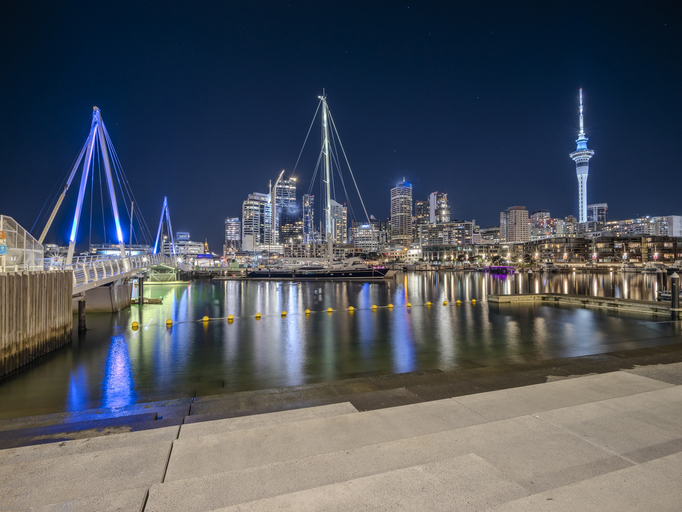Auckland Council says Aucklanders have backed the organisation’s draft strategy for how the city should grow over the next three decades, with more than 10,000 giving feedback.
The Council says its Future Development Strategy is a 30-year plan to ensure homes, jobs and infrastructure are built in the right places, at the right time, to accommodate an expected half a million more people. It also addresses environmental protections and building resilience to natural hazards and climate change while making the best use of limited funding for infrastructure, the Council said in a statement.
Public consultation ran from 6 June – 31 July and results released today come from responses from 8,552 Aucklanders, 256 organisations including many developers and 1,275 pro-forma campaigns.
Chair of the Planning, Environment and Parks Committee, Councillor Richard Hills says public feedback results show 66 per cent of individual responses support focusing growth in existing urban areas, with other proposals gaining even stronger support.
“For cities to grow successfully, there has got to be a clear, agreed plan for our city’s growth. This is where the Future Development Strategy comes into play,” he said.
“We asked Aucklanders to tell us if we had got this right and their responses show they strongly support our overall approach for planning our city’s future growth.
“People have said they support more homes close to amenities, transport, and jobs, shops, and schools. They want more efficient public transport, reduced emissions, and infrastructure that supports housing with amenities and facilities like parks, education and healthcare delivered at the same time to improve people’s quality of life.
“The proposals have also received overwhelming support from the council’s local boards, with 20 of the 21 boards backing the strategy’s direction,” says Cr Hills.
“At the heart of this strategy is making sure we are future proofing our city for generations to come,” says Auckland Council’s General Manager of Auckland Plan, Strategy and Research, Jacques Victor.
“The council’s core approach to managing growth over the past decade, with most growth occurring in existing urban areas, remains mostly the same through this revised strategy.
“However, there are two significant changes. A stronger focus on responding to climate change, particularly flooding hazards and protecting people and property, and a greater recognition of the council’s financial challenges, and when it can invest in infrastructure and services, especially in greenfield areas.
“Overall, a strong theme from all feedback was the need for investment and improvements in infrastructure to support growth in existing urban areas. We’ve listened to all Aucklanders, and what they’ve told us is being taken into account in the Future Development Strategy for our elected members to consider,” he says.
“The Future Development Strategy strikes a balance between both growing outwards at the edges of the city and having new homes closer to centres in existing urban areas. It stages the outwards growth in a way that provides the enabling infrastructure needed to support communities so that, for example, so we don’t end up with new housing developments which don’t have services or facilities, like public transport.
“We can’t afford to build infrastructure everywhere at the same time, which means prioritising infrastructure in areas where growth is occurring, and where the most people can benefit from that investment. But the strategy also recognises that, at times, this infrastructure can be provided by developers or through other funding mechanisms, at no cost to council and ratepayers,” says Mr Victor.
Focusing growth in existing urban areas
The highest level of feedback, with 8,878 responses, was about focusing most of the city’s future housing and business growth within existing urban areas.
The vast majority of responses (8,439) came from individuals, with 66% supporting this approach. Reasons included that this would make public transport more viable and efficient, protect rural areas and highly productive food growing land, and that it’s better for reducing greenhouse gas emissions and improving well-being and quality of life.
Additionally, it was supported as the most cost-effective approach for growth, allowing for the use of exsisting infrastructure already in place, with concerns raised about the cost of building and maintaining new infrastructure at the city’s edges.
Accessible local centres
Focusing development near local centres where people can easily access jobs, shops, schools, and social activities by walking, cycling and public transport received 74% support from 8,439 individuals. Supporting comments mentioned potential benefits, such as improving health and wellbeing, and better environmental outcomes from people getting around more easily and travelling shorter distances.
Avoiding areas with hazards
An overwhelming 80% of individual responses agreed with the proposal to avoid further growth in areas exposed to significant natural hazards, like flooding, where development may not be appropriate, while 13% disagreed.
Among the 5,674 individual supporting this approach, the most common reasons were protecting people and property and avoiding the monetary costs in making these areas safe to live in.
Prioritising resilient infrastructure
The proposal to prioritise investment in more nature-based infrastructure that responds to the impacts of climate change, such as rain gardens, swales, and detention basins, received 74% support from 5,270 individuals, with 14% not supporting it.
Supporters felt that this would improve the wellbeing of communities, climate resilience and be better for the environment.
Auckland Council’s Planning, Events and Parks Committee will consider any changes resulting from the public feedback and adopting the final Future Development Strategy at its 5 October meeting.
You can read the summary feedback report at: akhaveyoursay.nz/futureauckland



